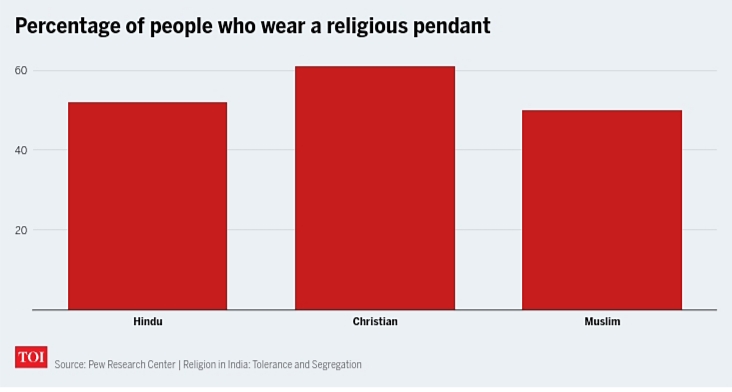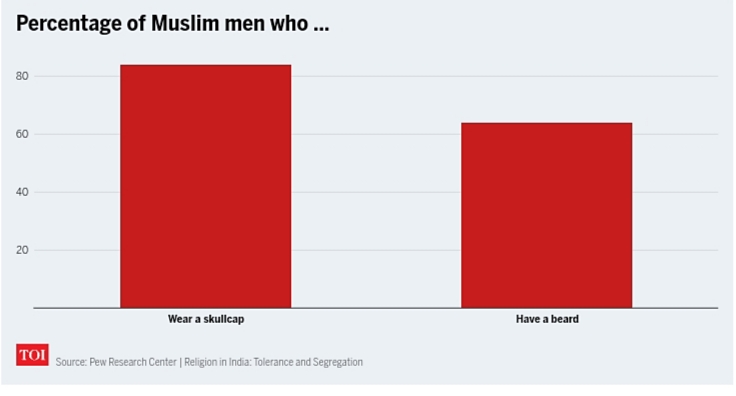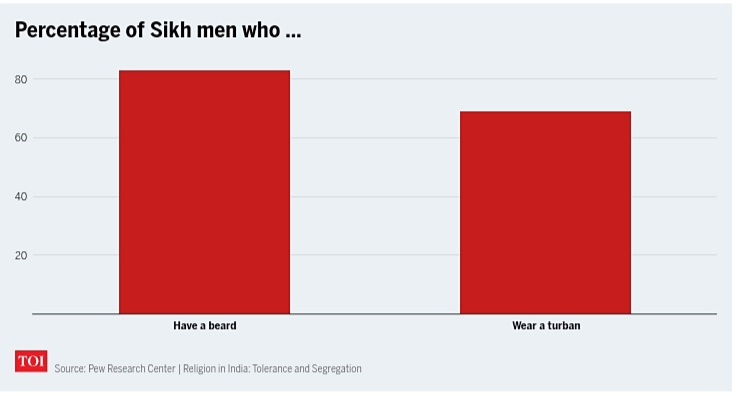TIMESOFINDIA.COM / Feb 22, 2022,
Courtesy https://timesofindia.indiatimes.com/ Article Link : https://bit.ly/3hvornn

New DELHI: The growing controversy over educational institutions in Karnataka barring hijab-clad students from entering classes has sparked off a larger conversation about religious clothing and whether authorities have the power to dictate what people can wear.
Contending that a majority of Indians flaunt diverse religious symbols, from the pendant to the hijab to the bindi and turban, the Muslim girls fighting the hijab ban in Karnataka recently asked why the government was ‘picking’ on the headscarf alone and making “this hostile discrimination”.
Though groups on the other side of this issue are quick to the point out that the restriction only applies in an educational setting, others have contended that any rule on religious clothing should be applied to all faiths without discrimination.
The argument put forth by the girls is supported by a Pew Research Center study which revealed that over half the people in India wear a religious pendant or other special clothing/article to display their religious observance.
The study titled ‘Religion in India: Tolerance and Segregation’ involved surveying 29,999 Indian adults (22,975 Hindus, 3,336 Muslims, 1,782 Sikhs, 1,011 Christians, 719 Buddhists, 109 Jains and 67 who identify as belonging to another religion or as religiously unaffiliated).
The interviews were conducted between November 17, 2019, and March 23, 2020.
Here are five charts to show how prevalent religious clothing is in India:

Half of Hindus (52%) and Muslims (50%) and a majority of Christians (61%) say they generally wear a religious pendant. Most Sikh men and women wear a kara and follow the distinctive Sikh practice of keeping their hair long, the study said.
Many of these practices are also gender-specific.
A majority of Muslim men say they wear a skullcap (84%), and most also have a beard (64%).

Smilarly, Sikh men largely have beards (83%) and wear turbans (69%).

Among women, wearing a head covering outside the home is a common practice among Muslims (89%), Sikhs (86%) and Hindus (59%).
The practice of covering the head outside the home is less widespread among Buddhist (30%) and Christian (21%) women, said the study.
Nearly two-thirds of Muslim women in India (64%) say they wear a burqa.
Overwhelming majorities of Hindu (84%) and Buddhist (78%) women say they wear a bindi, and at least some Muslim (18%), Christian (22%) and Sikh (29%) women also say they do this, even though the practice is not typically considered part of these religious groups’ traditions.

Meanwhile, a slim majority of Hindu men wear a tilak (53%).
In general, Indians with higher religious observance are more likely to follow these practices related to clothing and appearance. For example, Hindu men who say religion is very important in their lives are more likely than other Hindu men to wear a tilak (56% vs. 42%).
Religious appearances also differ by region: Hindu women in the South are significantly less likely than Hindu women nationally to say they cover their heads outside of the home (22% vs. 59%).
Wearing a hijab is more common among Southern Indian Muslim women than Muslim women elsewhere in the country, said the study.

Hindu respondents in the Northeastern region are generally
the least likely to follow customary appearance practices.
. Hindu women in the Northeast are significantly less likely than
Hindu women nationally to wear a bindi (59% vs. 84%), or to cover their head (29% vs. 59%).
The same pattern applies to men: Hindu men in the region are less likely than Hindu men elsewhere to wear a tilak (21% in Northeast, 53% nationally).
Among Hindus, caste is also an important marker of religious clothing, said the study.
Brahmin men are more inclined than others to say they wear a tilak (76%, compared with 53% among Hindu men overall) and a janeu, a sacred white thread worn around the chest, usually after an initiation ceremony (56% vs. 18%).”
